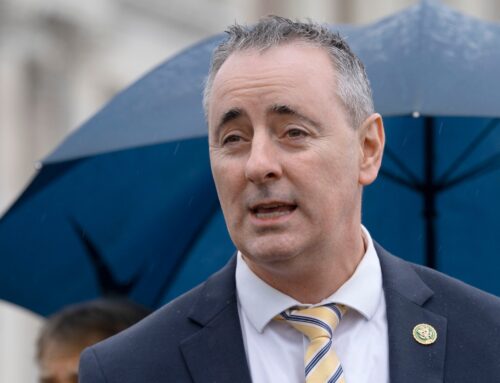Behind India’s remarkable showing on renewables
June 3, 2025
Behind India’s remarkable showing on renewables
India is steadily working toward our long-term goal of achieving 1,800 GW of non-fossil capacity by 2047.
Today, India stands as one of the world’s foremost clean energy leaders, ranked third in solar energy, fourth in wind power, and fourth in total renewable energy capacity. With over 232 GW of renewable capacity installed and another 176 GW under construction, we are not just meeting our energy needs but actively shaping the global discourse on energy transition. This progress is the outcome of bold reforms, timely decisions, and a clear long-term vision pursued consistently under the leadership of Prime Minister (PM) Narendra Modi over the past 11 years. He had a clear vision to build a robust renewable energy ecosystem, and even as the Gujarat chief minister, he had pioneered large-scale solar projects long before clean energy became a global priority.
 PREMIUM
PREMIUMIn the past year alone, India has added a record 29 GW of renewable energy to the national grid. Solar capacity has grown from just 2.63 GW in 2014 to over 108 GW in 2025, a staggering 41-fold increase. Wind capacity has also surpassed 51 GW. These projects, spread across the length and breadth of the country, are now being stitched together through a unified transmission system, realising the vision of One Nation One Grid.
But to appreciate the scale of this transformation, we must remember where we began. In 2014, India’s power sector was in deep crisis. Electricity shortages were chronic. The double grid failure in 2012, first impacting the Northern Region with 36,000 MW of load loss and subsequently causing the collapse of the Northern, Eastern, and North-Eastern grids affecting 48,000 MW is still fresh in our memory. Transmission infrastructure was overburdened, and investor confidence was low. Renewable energy was considered expensive and unreliable. The global community did not view India as a serious clean energy player. And within the country, public expectations were modest at best.
That scenario has changed decisively. From lagging behind, we now lead by example. Here, I highlight 11 transformative reforms in the RE sector over the last 11 years.
First, the shift from feed-in tariffs to a transparent, market-driven bidding process marked a watershed moment. Competitive bidding and tariff rationalisation led to solar tariffs plummeting from ₹10.95 per unit in 2010 to an astonishing ₹1.99 per unit by 2021. This reform anchored investor confidence and established price parity with fossil fuels.
Second, another key enabler has been the waiver of inter-state transmission system (ISTS) charges. By removing these charges, the government eliminated one of the major bottlenecks for project developers. Extended until 2032 for offshore wind and 2030 for green hydrogen, this policy effectively unshackled renewable energy deployment from geographic limitations and encouraged pan-India energy flow.
Third, the Production Linked Incentive (PLI) scheme for solar manufacturing with ₹24,000 crore in incentives has ignited a domestic manufacturing boom, from 2.3 GW in 2014 to 88 GW in module and from 0 to 25 GW in cell capacity by 2025. This strengthens supply chains and boosts energy security.
Fourth, the Approved List of Models and Manufacturers (ALMM), Approved List of Components and Manufacturers (ALCM) as well as Domestic Content Requirements (DCR) have created a level playing field for Indian manufacturers, paving the way for a resilient and competitive solar ecosystem.
Fifth, the PM Surya Ghar: Muft Bijli Yojana, targeting rooftop solar installation in one crore households to create 30 GW of decentralised capacity, is transforming access to clean energy, with 13.75 lakh houses already on-boarded. Similarly, the Pradhan Mantri Kisan Urja Suraksha evam Utthan Mahabhiyan (PM-KUSUM) is solarising agriculture by enabling farmers to deploy decentralised solar systems. Over 11 lakh pumps have been solarised, transforming India’s most energy-intensive sector into a climate ally.
Seventh, from modest inflows in 2014, India attracted $19.98 billion of foreign direct investment (FDI) in the RE sector between April 2020 and September 2024. Another key catalyst in this journey is the National Green Hydrogen Mission, backed by an investment of nearly ₹20,000 crore.
Eighth, India’s investment in Green Energy Corridors and the 2030 transmission roadmap ensures that renewable energy projects can connect to the grid efficiently and reliably. This reduces curtailment risks and enhances grid stability.
Ninth, offshore wind initiatives, with 37 GW of tenders planned by 2030, are being backed by viability gap funding and robust site surveys. Pilot projects in Gujarat and Tamil Nadu are already laying the foundation for India’s next renewable frontier.
Tenth, India has also moved decisively with a hybrid and round-the-clock power policy. By promoting wind-solar hybrids and firm & dispatchable renewable energy (FDRE), India is building 24/7 clean energy solutions.
Eleventh, through solar programmes for Particularly Vulnerable Tribal Groups and under the PM JANMAN mission and the CPSU Scheme Phase-II, thousands of homes in remote and tribal areas have been electrified, pushing inclusive growth.
The International Solar Alliance, launched by PM Modi, has brought together over 100 countries. The vision of One Sun, One World, One Grid is showing the world how solar power can unite nations. It is also the first international and intergovernmental organisation to have headquarters in India. The world is watching India. And the world is learning from India. At the RE-Invest 2024, investors from across the world committed ₹32.45 lakh crore by 2030 to India’s clean energy future.
The Union government has set a target of 500 GW of non-fossil fuel power capacity by 2030. As of now, we are already at 228 GW. Another 176 GW is under construction. And 72 GW is in the bidding stage. We are steadily working toward our long-term goal of achieving 1,800 GW of non-fossil capacity by 2047. We are not just on track, we are ahead of the curve.
Pralhad Joshi is Union minister of consumer affairs, food, and public distribution as well as minister of new and renewable energy. The views expressed are personal.
All Access.
One Subscription.
Get 360° coverage—from daily headlines
to 100 year archives.

E-Paper

Full Archives

Full Access to
HT App & Website

Games
Already subscribed? Login
Search
RECENT PRESS RELEASES
Pa. solar installers say U.S. House budget bill is a ‘disaster’ for business
SWI Editorial Staff2025-06-03T08:49:14-07:00June 3, 2025|
Clean Energy Giant SolarBank Follows MicroStrategy Into Bitcoin, Leverages $190M Solar Pro
SWI Editorial Staff2025-06-03T08:49:10-07:00June 3, 2025|
PA House Committee Advances Renewable Energy Plan Amid Rate Hikes
SWI Editorial Staff2025-06-03T08:49:02-07:00June 3, 2025|
Behind India’s remarkable showing on renewables
SWI Editorial Staff2025-06-03T08:49:00-07:00June 3, 2025|
CARRIE: Mike Flanagan’s Stephen King Adaptation Adds Amber Midthunder, Samantha Sloyan, An
SWI Editorial Staff2025-06-03T08:48:51-07:00June 3, 2025|
CleanSpark Releases May 2025 Bitcoin Mining Update
SWI Editorial Staff2025-06-03T08:48:01-07:00June 3, 2025|
Related Post





